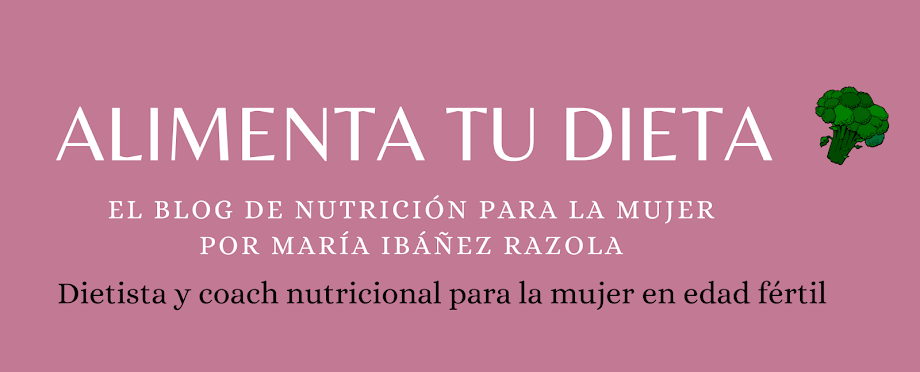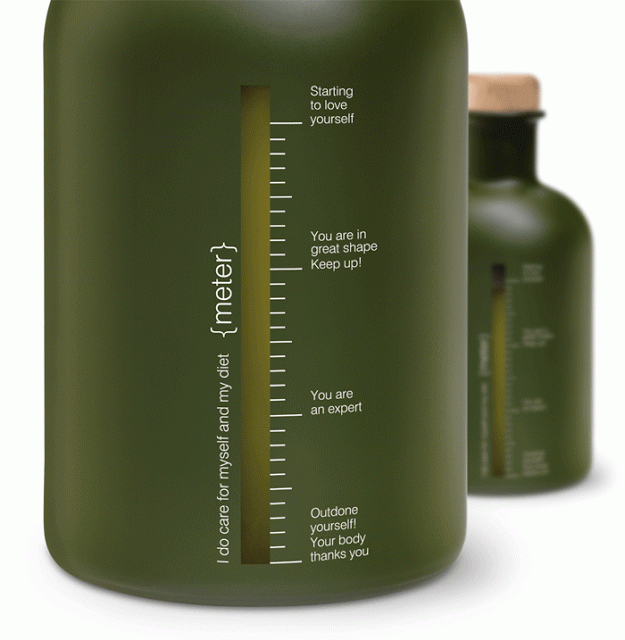Leelo En español más abajo!!
A few weeks ago the EFSA (European Food Safety Agency) released the news that a new artificial sweetener had been approved: Advantame.Who is this new boy? The younger brother of Aspartame. A derivative of it. Well, according to the Scientific panel on Food Additives, it is safe (in terms of carcinogenic or genotoxic effects). But, it seems that is not very stable in acidic beverages and heated foods. Yet it will soon be introduced under another E-number in manufactured foods.
Sugar is truly addictive, we know it and we are worried about it!
3 Types of consumers:
A- Consumers worried about their health, wanting natural foods
B- Consumers worried about their belly growing, wanting anything to cut down on sugars
C- Consumers not worried at all!
Are you a Type A, B or C consumer?
- Artificial sweeteners will be used as long as they are approved and easy to introduce in food formulas
- "Natural" sweeteners are the new trend, much more expensive for the consumer and sold as safe and health friendly.
Stevia is the new kid on the block.
STEVIA, the Real Story
Stevia is a plant from South America whose
extract is 200 times sweeter than sugar but does not raise blood insulin
levels.
The plant leaf has been traditionally used in Paraguay and Brazil for medical purpose. And it has been sold in Japan for 40 years.
But in 1991, the FDA (Food and Drug Federation, from United States) did not want to approve it because of pressure from other famous artificial sweetener producers. BUT! later on in 2008, the use of stevia compounds were approved as Coca Cola and Pepsi extracted them. So, not until a huge food company was involved did the stevia become legal. But the highly processed method used to produce the famous Truvia (brand of Coca Cola's stevia) is nothing but artificial. In 2011 stevia was approved in Europe.
Obviously, marketing makes it look like the process is simple and natural:
 |
| Source: Cargill |

So, don't think that the extraction of Stevia is like cold pressed extra virgin olive oil. Further from the truth, the extraction is done by using many chemicals, and now there are more than 40 steps of extraction. Check the patent here>
Coca Cola Patent of Stevia
Also, when checking the ingredients list of the Truvia Stevia, there is another ingredient called Erythritol , that is not great either. It is a natural sugar but manufacturers don't directly use the natural stuff, they extract it from maize (genetically modified) that is fermented in another long complicated process to get erythritol. Erythritol is found in most manufactured stevia.
So, the positive thing about sweeteners like this is that it will control sugar intake and in a way it could be beneficial in a weight management plan.
However, as Dr Robert Lustig, author of Fat Chance: The Bitter
Truth About Sugar says: What we don't know are the long-term effects of sweeteners like stevia, such as whether these compounds affect hormones that alter
brain function.
It is true that we are fooling our brain into thinking that there is a sugar influx and then it releases insulin, which is counterproductive for weight loss.
What do we have left? Your own judgement. Control sugar intake. That's the only safe way. We all understand that from time to time the espresso coffee needs a bit of sweetness and a teaspoon of sugar is ok if you have a healthy diet.
But if you are sure you won´t get rid of sugar cane, forget stevia and try these delicious real natural alternatives:
Maple Syrup: Almost like a caramel consistency but the delicate flavor is exquisite. Canadians know it well. And almost all worldwide consumption of maple syrup comes from Midwest North America and Canada. Best one from Vertmont.
Pure Raw Honey: Honey straight from the hive. It is not pasteurized , but only slightly warmed to avoid crystallization.This can
only be found in the local honey farms. Stopping by a lovely rural town in the middle of nowhere selling its own honey is warranty of getting the real Raw Honey
Muscovado or molasses Sugar: A yummy dark brown and moist sugar that has a strong molasses flavor. And it keeps most of the
minerals of the natural cane before processing.
 |
| Muscovado sugar (Top)Wikipedia |
But above all,
get used to the natural sweetness of foods.
------
¿Conoces el advantame? Es un nuevo edulcorante que se ha aprobado en Europa para su uso alimentario. Pero es artificial. Hace un par de semanas la EFSA (Agencia europea de seguridad alimentaria) dio el visto bueno a este hermano del conocido Aspartamo.Según el panel científico de aditivos no presenta riesgos para la salud(causa-efecto, o efecto inmediato claro) y pronto será introducido por la industria alimentaria a través de otro número E.
Realmente el azúcar es adictivo, nos encanta y a la vez nos preocupa cada vez más su consumo.. Así que
entre ciclamatos, sacarinas y aspartamos también aparecen la Stevia.
En mi experiencia, he podido ver que tenemos
3 tipos de consumidores:
A. Consumidor que se preocupa por su salud y cuerpo, busca alternativas sanas, eco y naturales
B. Consumidor que se preocupa por su cuerpo y esa barriga que va creciendo y busca cualquier substituto de grasas y azúcares.
C. Consumidor que le da igual y come lo que sea en la cantidad que sea.
Que tipo de consumidor eres?
Para la industria hay 2 claros objetivos que crecen como la espuma (A y B) por eso tenemos 2 tipos de edulcorantes :
Los artificiales, que están sintetizados químicamente en laboratorio
Los naturales de alguna fuente natural como la planta stevia rebaudiana o la miel de abeja.
¿Quieres saber más de la Stevia?
Stevia, La Verdadera Historia
La stevia es una planta Sudamericana que tiene un poder endulzante hasta 300 veces superior al azúcar tradicional, pero no provoca picos de insulina en sangre. La hoja de la planta se utilizó tradicionalmente con uso medicinal en Paraguay y México y se lleva vendiendo en Japón durante 40 años.
Pero en 1991, la FDA (Food and Drug Administration de Estados Unidos) no quiso aprobarlo por la presión que existia de otros grandes productores de edulcorantes artificiales(como Splenda, Sweet n Low, Equal). Hasta el 2008 no sé consiguió legalizar la stevia en Estados Unidos. ¿Por qué? Porque los compuestos de la estevia estaban desarrollandose a través de las mega compañias Coca Cola y Pepsi. Estas empresas ejercen un enorme poder.
En Europa la stevia se aprobó en el 2011.
La marca más conocida de Stevia es Truvía. Pero como es de esperar de una gran industria, el procesado es largo y actualmente hay
más de 40 pasos para la obtención "natural" de los rebaunosidos de la stevia.
No pienses que la extracción de la stevia comercial es tan natural como la extracción en frio de aceite de oliva virgen. Todo lo contrario. En el proceso hay multitud de componentes para crear un polvo cristalizado con aspecto de azúcar. El consumo tradicional de la planta de estevia original está muy lejos de esto.
Los consumidores cada vez saben más y Cargill fue denunciada por su publicidad engañosa, alegando que la stevia era natural:
¿Resultado?
En las noticias:
Cargill llega a acuerdo en denuncia por publicidad engañosa de Truvia como edulcorante natural
En los ingredientes de la stevia también nos encontramos con: Eritritol, otro compuesto endulzante de origen natural pero superprocesado por la industria a partir del maiz (geneticamente modificado).
 Esta es la verdadera Stevia rebaudiana secada y molida lista para consumir, manteniendo todas sus cualidades y beneficios para la salud, como tradicionalmente se ha hecho :con una pizca en un té o mascando la hoja como los guaranies!
Esta es la verdadera Stevia rebaudiana secada y molida lista para consumir, manteniendo todas sus cualidades y beneficios para la salud, como tradicionalmente se ha hecho :con una pizca en un té o mascando la hoja como los guaranies!
La Stevia que compras NO es natural. Tiene su límite de ingesta diaria incluso10 veces más reducida que en el aspartamo.
Stevia: 4 mg/Kg de peso y día
Aspartamo:40 mg/kg de peso y día.
Es solo un tipo más de edulcorante que la industria alimentaria aprovecha para introducir en el mercado por que es más lista que nadie y sabe que hay consumidores enganchados a la palabra natural .
¿Que nos queda entonces? Tu propio juicio. Controla el consumo de azúcar de cualquier tipo (Quieres saber donde se esconde? Te animo a que leas mi artículo sobre los cereales y el azúcar:
http://www.nutriteca.blogspot.com.es/2013/04/breakfast-cerealsgood-or-not.html )
Una cucharilla de azúcar en un café es comprensible, siempre y cuando tu alimentación no esté saturada de azúcares escondidos.
Pero si estás seguro de que no puedes dejar el azúcar, olvídate de stevia y opta por estas alternativas deliciosas y de verdad naturales:
Miel de abeja pura: La del pueblo de toda la vida. Fresca directa del apicultor. Y si está algo sólida mejor.
 |
| mierarlanza.com |
Sirope de Arce: el auténtico de grado C, muy rico en minerales. No confundir con sirope de savia!
Azúcar integral, Melaza y Panela: Todos son mínimamente procesados del azúcar de caña y contienen además minerales como magnesio y vitaminas. El azúcar blanco no tiene nada de esto.
 |
| Panela |
Moraleja: Controla el consumo de azúcar. Toma poco pero bueno. Y acostúmbrate al sabor dulce natural de muchos alimentos.




















































